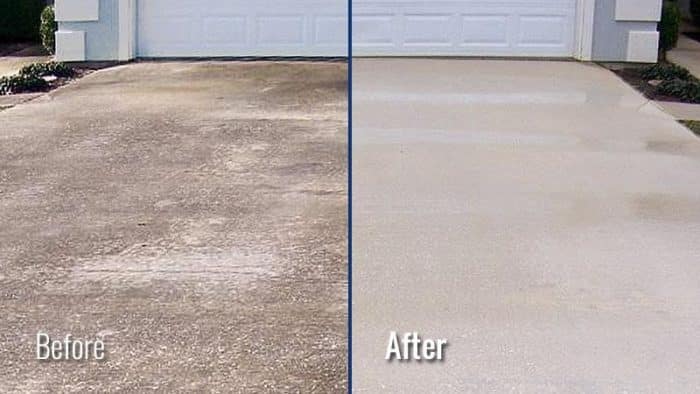Oil spills aren’t uncommon on driveways or garage floors. But while they happen often, they definitely don’t add to your home’s appeal. Oil stains can leave unsightly marks on your property, and if left untreated, they can also damage the surface over time.
In this article, we’ll go through how to remove stains from your driveway or garage floor with easy and effective tips. Whether you’re tackling a recent car oil leak or an older, more stubborn spot, there’s a solution.
Removing Small Oil Stains or Spots
If you’re dealing with a recent oil spill, the best way to clean it is to act quickly. Fresh spots that haven’t had time to soak deep into the surface are much easier to handle.
Here’s a simple tip to get started:
Use soap and hot water – Apply a generous amount of detergent or dish soap directly onto the affected area.
Grab a steel or stiff nylon brush – This will help work the cleaner into the textured surface.
Scrub and rinse – Gently clean the spot, then rinse with water. You may need to repeat the process depending on how much liquid has seeped in.
This approach is great for small areas and recent leaks caused by brake fluid, an oil change, or engine drips. It doesn’t require much equipment, and you probably already have most of what you need at home.
Removing Larger or Older Oil Spots
When oil has had time to soak in, or the spill is large, you’ll need something more powerful than soap and water.
Use a Degreaser or Chemical Cleaner
Degreasers are one of the most effective products you can use to remove stains caused by oil, grease, and other automotive fluids. These heavy-duty cleaners are designed to break down tough messes without harming your surface.
Make sure to:
- Check the instructions on the product label.
- Wear protective gear like gloves and goggles.
- Work in a ventilated space to protect yourself and the environment.
Some cleaners are stronger than others, sometimes you may need to try a few different options to find what works best. You’ll also want to look for a product that’s safe to use along walkways or near grassy areas and garden beds.
Steps for Using a Degreaser
If you’ve never used one before, follow these steps for the best results:
Apply the product: Pour it directly onto the oil spill. For lighter messes, you can dilute it with water. For stubborn spots, use it at full strength.
Let it sit: Leave the degreaser on the affected area for at least 2-3 minutes. For heavy build-up, wait a little longer, but don’t let it dry completely.
Use a brush: Work the cleaner into the surface using a stiff-bristle or steel brush. Add extra pressure for deeper stains.
Rinse thoroughly: After 5–10 minutes, wash everything away using clean water.
Important Tip: Any oil that’s penetrated below the surface may resurface within 24 hours. If that happens, start the process again. It may take more than one attempt to fully remove the stain.

A Better Way to Remove Stubborn Oil Stains
DIY solutions can be effective, but they take time, and there’s no guarantee they’ll completely remove stains, especially if you’re working on older marks or large areas. If you’re still not sure how to remove stains from your driveway, tired of guessing what product to use, or don’t want to throw your weekend at the problem, there’s a better option.
Professional driveway pressure cleaning is a safe, efficient way to remove tough stains, oil spills, and built-up grime. With the right equipment and environmentally friendly techniques, a professional can get the job done faster and with better results than most at-home methods.
It’s also ideal if you’re short on time, dealing with multiple stains, or want to make sure your home looks its best before a sale or inspection.
If you want to learn more or schedule a professional driveway pressure clean, get in touch with our team at The Pressure Cleaning Guys. Our team is happy to share more information on how we can help.
FAQs
What if I don’t have a degreaser, can I use household items instead?
Yes, you can try to use WD-40, dish soap, or even baking soda as a temporary solution. Start by soaking up the liquid with litter, then pour your chosen cleaner onto the spot and scrub it in. Rinse with water. Just keep in mind that these DIY products may not work as well for older or more stubborn oil stains.
Will pressure washing damage my surface?
Not if it’s done correctly. Using the right pressure level and equipment type is key. Professional services like ours know how to clean your concrete driveway safely without damaging the surface or spreading oil further.
How soon should I act after an oil spill?
The sooner, the better. Oil that’s left to sit will soak into the pores of the concrete and become harder to remove. Start cleaning as soon as possible, or give us a call, and our team of experts can take care of these stains for you.
Can I prevent oil stains from forming in the first place?
Absolutely. Place an absorbent mat or cardboard under your car when doing maintenance like an oil change. If there’s a spill, sweep it up immediately and follow up with a cleaner to remove any residue.
Why do stains sometimes come back after I clean them?
Oil can seep deep into the concrete so they can potentially come back. Even if you clean the surface well, some residue may resurface over time. This is why multiple rounds or stronger cleaning solutions are sometimes necessary to fully remove the stain.




